
Fighting Force is a 1997 3D brawler developed by Core Design and published by Eidos. It was released for PlayStation, Microsoft Windows, and Nintendo 64 on 15 October 1997. Announced shortly after Core became a star developer through the critical and commercial success of Tomb Raider, Fighting Force was highly anticipated but met with mixed reviews.

Nightmare Creatures is a 1997 survival horror video game developed by Kalisto Entertainment for PlayStation, Microsoft Windows and Nintendo 64. A sequel, Nightmare Creatures II, was released three years later. A mobile phone version of Nightmare Creatures was developed and published by Gameloft in 2003. A second sequel, Nightmare Creatures III: Angel of Darkness, was cancelled in 2004.
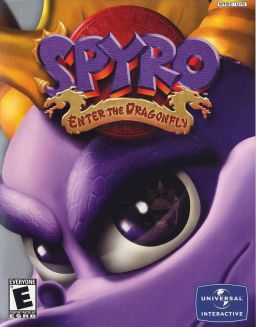
Spyro: Enter the Dragonfly is a 2002 platform game developed by Equinoxe Digital Entertainment and Check Six Studios for the PlayStation 2 and GameCube, and published by Universal Interactive. It is the fourth console game in the Spyro series and the sixth overall, being the first for either of its consoles and the first main entry to not be developed by Insomniac Games.

Armored Core is a 1997 third-person shooter mecha video game developed by FromSoftware and published by Sony Computer Entertainment for the PlayStation. It was originally released in Japan by FromSoftware in July 1997 and in North America in October 1997 and Europe in 1998 by Sony Computer Entertainment. The game is the first entry in the Armored Core series. A digital port was released in 2007 in Japan and 2015 in North America on the PlayStation Network as a part of the PSone Classics line of games.
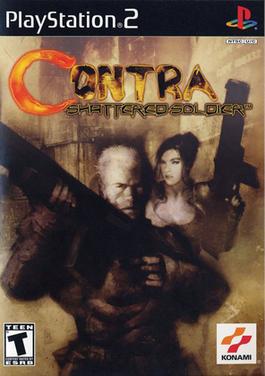
Contra: Shattered Soldier, originally released in Japan as Shin Contra, is a video game that is part of the Contra series by Konami. It was developed by Team Kijirushi, a group of staff members within Konami Computer Entertainment Tokyo. The game marks a return to the two-dimensional gameplay style employed by the series prior to Contra: Legacy of War. A sequel to Contra: Hard Corps, the game was released for the PlayStation 2 in 2002 and for the PlayStation Network in both 2012 for Japan and 2013 for North America.

Rogue Trip: Vacation 2012, also known as Rogue Trip, is a vehicular combat video game developed by SingleTrac and published by GT Interactive for the PlayStation in 1998. The game is set in an apocalyptic fiction alternative history version of the year 2012 where mercenaries fight against each other using vehicles, and various weapons as they pick up tourists, hitchhikers, and passengers paying them fares for bringing them to vacation destinations around the remnants of the destroyed United States, and these mercenaries call themselves "auto mercenaries".

Spider: The Video Game, is a 2.5D platform game developed by Boss Game Studios and published by BMG Interactive for the PlayStation. The player takes the role of a cybernetic spider, within which the mind of its creator, Dr. Michael Kelly, has been implanted.
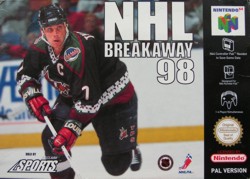
NHL Breakaway 98 is a 1997 ice hockey video game for the PlayStation and Nintendo 64. It was the first hockey game to come from Acclaim Entertainment and the first game released under the publisher's new Acclaim Sports label. The game met with divisive reviews upon its release for the PlayStation, though the game's management mode and its system of using points to improve aspects of a team received widespread praise, but reviews for the later Nintendo 64 version were more consistently favorable. It was followed by a sequel, NHL Breakaway 99, released the following year.

Alien Resurrection is a 2000 first-person shooter video game based on the 1997 film of the same name. It was originally intended to coincide with the film's release, but was mired in development hell for several years, finally being completed and released in 2000. The game was developed by Argonaut Games and published by Fox Interactive for the PlayStation.

Test Drive 4X4 is a racing video game co-developed by Accolade's internal development team and Pitbull Syndicate, and published by Accolade for PlayStation and Microsoft Windows.

Batman & Robin is an action-adventure video game for the PlayStation based on DC Comics character Batman, and the 1997 film Batman & Robin. It was developed by Probe Entertainment and published by Acclaim Entertainment in conjunction with Warner Bros. Interactive Entertainment and DC Comics. It is a sequel to Batman Forever, which was based on the 1995 film Batman Forever.

Colony Wars: Red Sun is a space combat simulator video game for the PlayStation developed by Psygnosis and published by Sony Computer Entertainment Europe and Midway Games in 2000. It is a sequel to Colony Wars in 1997 and Colony Wars: Vengeance in 1998. Instead of being a starfighter pilot for the League of Free Worlds or the Colonial Navy, the player now assumes the role of a civilian miner-turned-mercenary.

MLB '99 is a Major League Baseball video game for the PlayStation released on April 14, 1998, developed by Sony Interactive Studios America and published by Sony Computer Entertainment America. The color commentary for the game is from Dave Campbell and the play-by-play announcer is Vin Scully. Baltimore Orioles third baseman Cal Ripken Jr. is featured on the cover.

Ninja: Shadow of Darkness is an action beat 'em up platform video game developed by Core Design and published by Eidos Interactive for the PlayStation. The story follows a warrior named Kurosawa, who is tasked of ridding Feudal Japan of an unspeakable evil.
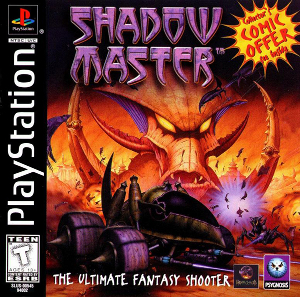
Shadow Master is a video game developed by HammerHead and published by Psygnosis for the PlayStation and Microsoft Windows. It is a first-person shooter in which the player character rides in an armed vehicle. It met with predominantly negative reviews which praised its visuals but criticized it for clunky controls and poorly designed, frustrating gameplay.
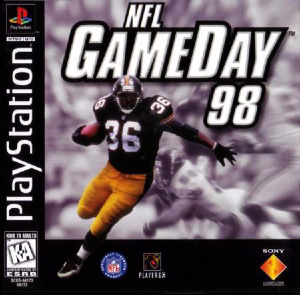
NFL GameDay 98 is the third video game in the NFL GameDay series. It was developed by Sony Interactive Studios America and published by Sony Computer Entertainment for the PlayStation in 1997. On the cover is Jerome Bettis.

NBA Fastbreak '98 is a basketball simulator released for the Sony PlayStation in 1997. It takes place during the 1997-98 National Basketball Association season. It was published by Midway Games and GT Interactive. Originally announced under the title "Hardwood Heroes", the game was released with minimal changes as NBA Action 98 on Sega Saturn and Microsoft Windows, published by Sega. Another version was being developed by Z-Axis for the Nintendo 64 under the title "NBA Fast Break 64", with a prospective November 1997 release, but it was cancelled.

NCAA Gamebreaker 98 is a video game developed by Sony Interactive Studios America and published by Sony Computer Entertainment America for the PlayStation in 1997.
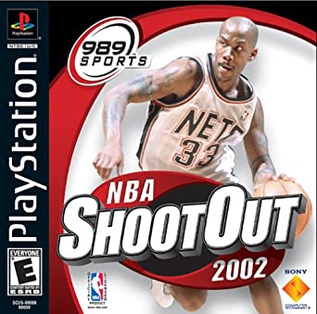
NBA ShootOut 2002 is a video game developed by 989 Sports and published by Sony Computer Entertainment America for the PlayStation in 2001. A PlayStation 2 version was in development, but it was ultimately cancelled.



















